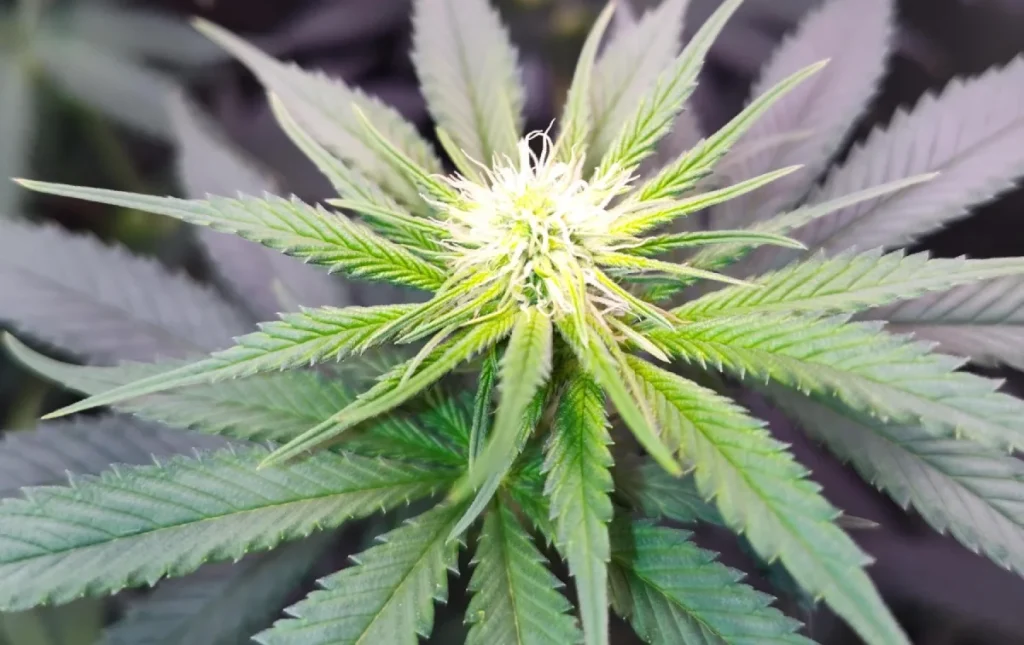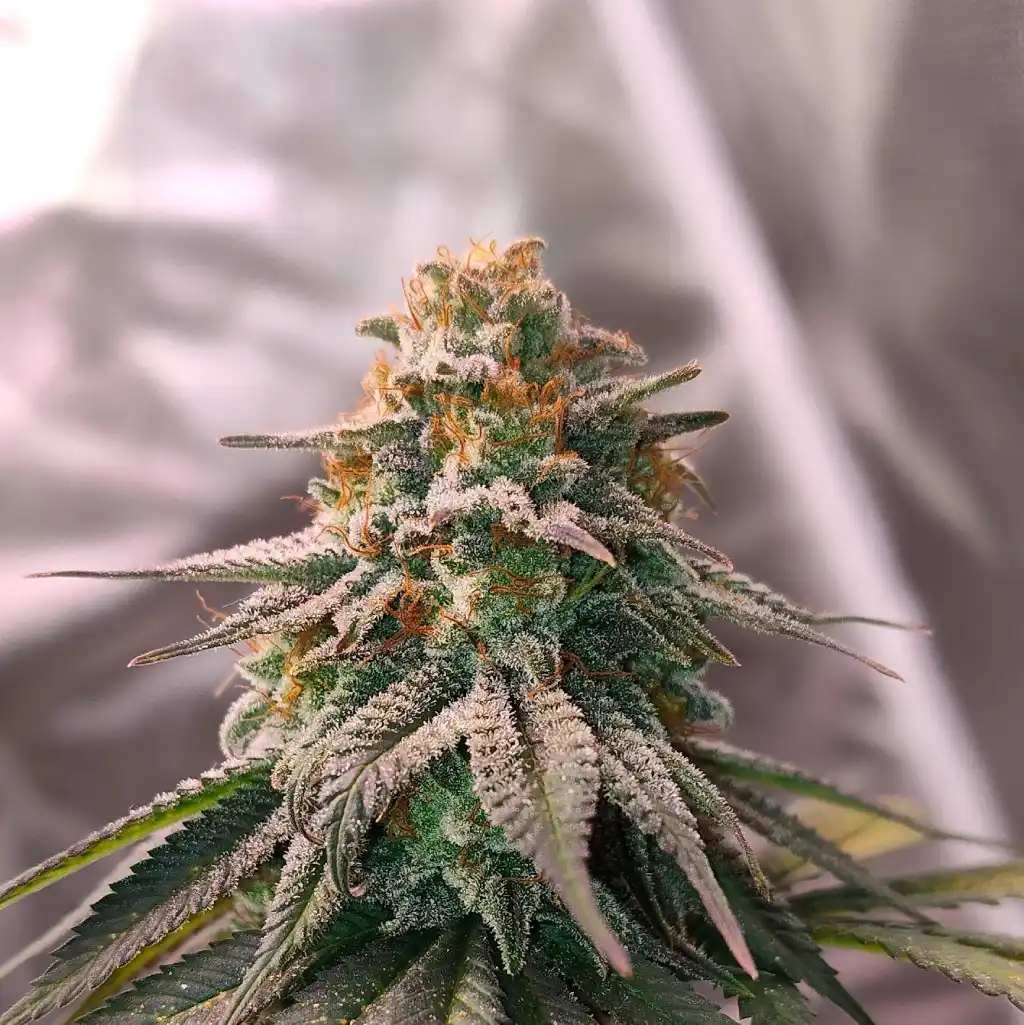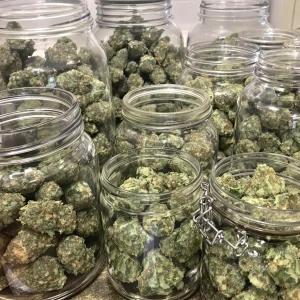Exceptional Genetics and Effects
Holy Snow is a unique hybrid cannabis strain created by crossing the legendary Neville’s Haze with an exotic plant from the Himalayas. This strain is celebrated for its complex terpene profile, blending citrus, pine, and spicy undertones with a hint of sweetness. With THC levels ranging between 20% and 24%, Holy Snow offers a potent, uplifting cerebral high paired with mild physical relaxation. Its effects are perfect for creative tasks, social gatherings, or simply unwinding while maintaining mental clarity.
This strain’s hardy genetics make it a favorite among cultivators. Its adaptability to various environments and resistance to pests and diseases make it an excellent choice for growers seeking reliable and robust plants. Additionally, its vibrant buds, coated in trichomes, make it a visually appealing option for enthusiasts.
Environmental Requirements for Growing Holy Snow Strain
Holy Snow thrives in stable environments with consistent temperatures and humidity levels. During the vegetative stage, maintain temperatures between 70-80°F (21-27°C) and humidity levels around 50-70%. In the flowering stage, lower the humidity to 40-50% to prevent mold and promote dense bud formation.
This strain prefers well-aerated soil enriched with organic nutrients or hydroponic setups with proper pH levels (6.0-6.5 for soil and 5.5-6.0 for hydroponics). Ensure ample airflow and light penetration to support healthy growth. Whether grown indoors or outdoors, Holy Snow performs best in climates that mimic its Himalayan heritage, with slightly cooler nights.
Setting Up the Growing Cannabis Space
Indoor Cannabis Cultivation
Indoor cultivation offers complete control over Holy Snow’s growing conditions. Use full-spectrum LED lights to mimic natural sunlight, maintaining an 18/6 light schedule during the vegetative stage. Transition to a 12/12 schedule during flowering to trigger bud development. Employ techniques like low-stress training (LST) or the Screen of Green (SCROG) method to maximize yield by enhancing light exposure and airflow.
A grow tent with proper ventilation ensures optimal air circulation. Use oscillating fans to prevent stagnant air and strengthen stems. Regularly monitor pH levels and nutrient intake to avoid deficiencies or toxicity, ensuring healthy development.
Outdoor Cannabis Cultivation
Outdoors, Holy Snow flourishes in Mediterranean-like climates with ample sunlight. Plant after the last frost to avoid temperature fluctuations. Choose a location with well-draining soil and enrich it with compost or organic matter. Holy Snow’s hardy genetics allow it to tolerate cooler nights, making it suitable for slightly temperate regions.
Use stakes or trellises to support the plant’s structure, especially during the flowering stage when buds become heavier. Regularly inspect for pests or environmental stressors to maintain a healthy grow.
Propagation and Germination of Holy Snow Strain
Start with high-quality Holy Snow seeds to ensure vigorous growth. The paper towel method is a reliable way to germinate seeds: place them between moist paper towels in a warm, dark environment. Within 24-72 hours, taproots should emerge.
Once germinated, transfer seeds to small pots filled with seedling soil. Keep the soil lightly moist and provide gentle lighting. Maintain a temperature of 75-80°F (24-27°C) to encourage healthy root development. As seedlings grow, transplant them into larger containers or directly into the ground, depending on your setup.
Vegetative Phase of Holy Snow Strain
During the vegetative stage, Holy Snow exhibits vigorous growth, developing robust branches and lush foliage. Maintain an 18/6 light cycle and provide a nitrogen-rich nutrient mix to support leaf and stem development.
Pruning and topping are recommended to shape the plant and improve light distribution. Regularly inspect for pests or nutrient deficiencies, adjusting your care routine as needed. With proper attention, Holy Snow will transition seamlessly into the flowering stage.
Flowering Phase of Holy Snow Strain
Holy Snow typically flowers within 8-10 weeks, producing dense, resinous buds with a frosty appearance. Switch to bloom-specific nutrients rich in phosphorus and potassium to enhance bud formation and resin production. Maintain consistent airflow and lower humidity levels to prevent mold or mildew.
Monitor trichome development closely to determine the ideal harvest time. Trichomes should appear milky white with some amber hues, indicating peak potency. Proper care during this phase ensures maximum yield and quality.
Cannabis Fertilization and Nutrition – Holy Snow Strain
Holy Snow’s nutritional needs vary throughout its lifecycle. During the vegetative phase, focus on nitrogen-rich fertilizers to promote leafy growth. Transition to phosphorus and potassium-heavy nutrients during flowering to support bud development.
Organic amendments like bat guano, kelp, and worm castings can improve soil quality and enhance terpene profiles. Avoid overfeeding to prevent nutrient burn, and flush the plants with plain water during the final two weeks before harvest to ensure clean, flavorful buds.
Pest and Disease Control for Cannabis Growing
Prevention
Preventative measures are essential for a successful grow. Keep the grow area clean and use sticky traps to monitor pests. Neem oil and insecticidal soaps are effective natural deterrents. Companion planting with pest-repelling herbs like basil or marigold can also provide protection.
Corrective Actions
If pests or diseases arise, act quickly to mitigate damage. Introduce beneficial insects like ladybugs or predatory mites to combat infestations naturally. For fungal issues, improve airflow and apply organic fungicides. Regular inspections and timely interventions ensure healthy plants and high-quality yields.
Harvesting and Curing for Cannabis Growing
Harvest Holy Snow when trichomes are predominantly milky white with a few amber hues, indicating peak potency. Use sterilized scissors to trim buds and hang them upside down in a dark, ventilated space with 45-55% humidity and temperatures around 65-70°F (18-21°C).
Once dried, cure the buds in airtight glass jars, opening them daily for the first week to release excess moisture. Proper curing enhances the strain’s flavor, aroma, and potency, resulting in a premium-quality product.
Is Holy Snow Strain Indica or Sativa?
Holy Snow is a sativa-dominant hybrid, delivering uplifting cerebral effects alongside mild physical relaxation. Its energizing nature makes it ideal for daytime use or creative pursuits while maintaining a balanced and enjoyable experience.
Advantages of Growing Holy Snow Strain
Holy Snow’s hardy genetics make it resistant to common pests and diseases, making it an excellent choice for growers of all experience levels. Its vigorous growth, high yield potential, and unique terpene profile make it a rewarding strain to cultivate. Additionally, its adaptability to different climates ensures success in various environments.
Disadvantages of Growing Holy Snow Strain
While Holy Snow is relatively easy to grow, its sativa dominance means it requires more vertical space, which can be challenging for indoor growers. Its nutrient needs must be carefully managed to avoid deficiencies or toxicity. Regular monitoring and proper care are essential to maximize its potential.
Problems in Cultivating Holy Snow Strain
Holy Snow Strain, despite its resilient genetics, can face challenges during cultivation. One common issue is overwatering, which can lead to root rot and hinder plant growth. Ensuring proper drainage and a balanced watering schedule helps prevent these problems. Nutrient deficiencies, particularly in nitrogen during the vegetative stage or phosphorus and potassium during flowering, can also affect plant health. Monitoring the soil’s pH and nutrient levels is essential to avoid stunted growth or yellowing leaves.
Another problem growers encounter is pest infestations, such as spider mites or aphids, which can damage leaves and buds. Maintaining a clean grow space and inspecting plants regularly can help catch infestations early. Mold and mildew may also develop in environments with high humidity, particularly during flowering. Controlling humidity levels and providing adequate airflow are key to preventing these fungal issues.
Advanced Pest Control for Cannabis Growing
Advanced pest control techniques for Holy Snow Strain focus on integrated pest management (IPM) strategies. Introducing beneficial insects like ladybugs or predatory mites can help naturally control pest populations. These biological controls target harmful insects without affecting the plant’s health or leaving chemical residues. Regular monitoring and identifying pests early ensure that these solutions are effective.
In cases of severe infestations, organic pesticides or horticultural oils like neem oil can be applied. These treatments are less harsh than chemical alternatives and minimize harm to the plant and environment. For fungal problems, using organic fungicides or adjusting the growing environment by lowering humidity and improving airflow can reduce outbreaks. A proactive approach combining biological, environmental, and organic methods ensures healthy plants and minimizes pest-related issues.
Similar Strains
Holy Snow’s unique profile makes it a standout strain, but several other strains offer similar experiences in terms of effects, flavors, and cultivation characteristics. Here are some alternatives that growers and enthusiasts may find intriguing:
Super Lemon Haze
Super Lemon Haze is a sativa-dominant hybrid known for its vibrant citrus aroma and energetic effects. Its zesty lemon flavor, derived from limonene, is complemented by hints of sweetness and spice. This strain is highly sought after for its uplifting cerebral high, making it perfect for daytime use. Super Lemon Haze thrives in both indoor and outdoor environments, requiring ample light and nutrients for optimal growth. Its flowering time is typically 9-10 weeks, and it’s known for producing dense, resin-rich buds.
Neville’s Haze
As a parent strain of Holy Snow, Neville’s Haze shares its sativa dominance and uplifting effects. This classic strain is celebrated for its intense cerebral high and complex flavors, blending earthy, pine, and citrus notes. Neville’s Haze can be challenging to grow due to its longer flowering time of 12-14 weeks, but the rewards are worth the wait. It thrives in warm climates and requires careful training to manage its height and ensure even light distribution.
Himalayan Gold
Himalayan Gold is another strain with a lineage tied to the Himalayas, offering a balanced hybrid experience. Its effects are both relaxing and uplifting, making it versatile for various occasions. Himalayan Gold’s flavor profile includes earthy and spicy tones with hints of citrus and sweetness. This strain is relatively easy to grow, exhibiting resistance to pests and diseases. It performs well in both indoor and outdoor setups, with a flowering period of 8-10 weeks.

Week-by-Week Growth Plan for Holy Snow Strain
Week 1-2: Germination and Seedling Stage
Holy Snow seeds germinate best using the paper towel method or by planting directly into a seedling mix. Keep the environment warm (75-80°F) and humid (70-80%) during this stage. Provide gentle lighting, such as CFLs or LED grow lights, and avoid overwatering to prevent damping-off.
Week 3-4: Early Vegetative Stage
As seedlings develop their first true leaves, transplant them into larger pots with well-aerated soil. Maintain an 18/6 light schedule and feed with a nitrogen-rich nutrient solution. Monitor for pests or signs of stress, and ensure proper airflow to strengthen stems.
Week 5-6: Late Vegetative Stage
Holy Snow enters vigorous vegetative growth during this period. Implement training techniques such as topping or low-stress training (LST) to manage height and improve light penetration. Continue providing nitrogen-heavy nutrients and maintain optimal environmental conditions (70-80°F, 50-70% humidity).
Week 7-8: Transition to Flowering
Switch the light schedule to 12/12 to initiate flowering. Gradually transition to bloom-specific nutrients with higher phosphorus and potassium levels. Lower humidity to 40-50% to reduce the risk of mold and encourage bud development.
Week 9-11: Early Flowering Stage
Buds begin to form, and the plant’s aroma intensifies. Ensure consistent lighting and airflow to support healthy development. Regularly inspect for pests or nutrient deficiencies and make adjustments as needed.
Week 12-14: Late Flowering Stage
Trichomes become more prominent, and buds reach their full size. Monitor trichome color to determine the ideal harvest window. Flush the plants with plain water during the final two weeks to remove residual nutrients and enhance flavor.
Week 15: Harvest and Post-Harvest
Harvest Holy Snow when trichomes are predominantly milky white with some amber hues. Dry the buds in a dark, ventilated space with 45-55% humidity and 65-70°F. Cure the dried buds in airtight jars, burping them daily for the first week to release moisture.
FAQs About Holy Snow Strain
What is the THC content of Holy Snow strain?
Holy Snow typically contains THC levels ranging between 20% and 24%. This potency provides a balanced experience, offering uplifting cerebral effects and mild physical relaxation. The high THC content makes it suitable for experienced users seeking a stimulating and creative boost.
How long does it take to grow Holy Snow strain?
Holy Snow’s complete growth cycle spans approximately 15 weeks. This includes 2 weeks for germination and seedling development, 6 weeks for vegetative growth, and 7-8 weeks for flowering. Proper care and optimal environmental conditions can enhance both yield and quality.
What are the key challenges in growing Holy Snow strain?
The main challenges include managing its sativa-dominant height, preventing nutrient imbalances, and maintaining proper airflow to avoid mold during flowering. Regular pruning and training techniques, such as topping and low-stress training (LST), can help manage its growth and ensure even light distribution. Consistent monitoring and prompt action can address potential issues effectively.





